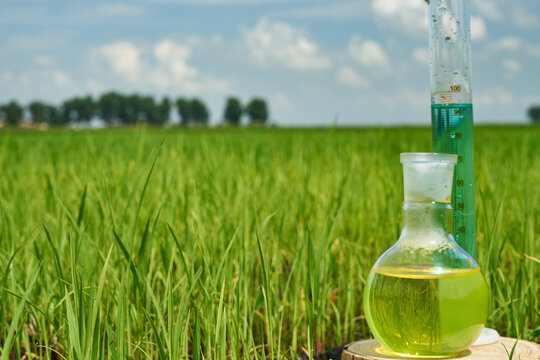Agrochemical Strategies in Modern Agriculture: A Comparative Analysis of Biopesticides and Traditional Pesticides

Strong 8k brings an ultra-HD IPTV experience to your living room and your pocket.
Introduction:
In today’s agriculture, the use of agrochemicals has become pivotal for enhancing crop yield and quality. Among these, pesticides play a crucial role in pest management strategies. However, with the rising concerns over environmental impact and human health, the agricultural sector is witnessing a significant shift toward sustainable practices. This article provides an in-depth comparative analysis of biopesticides and traditional pesticides, focusing on efficacy, environmental impact, and market trends.
Understanding Agrochemicals in Agriculture
Agrochemicals encompass a range of chemical products used in agriculture, including fertilizers, herbicides, insecticides, and fungicides. Pesticides, in particular, are chemicals designed to kill or control pests that threaten crops. They can be broadly classified into two categories: traditional pesticides and biopesticides.
Traditional Pesticides
Traditional pesticides, often synthetic, have been the mainstay of pest control in modern agriculture. They are formulated to target specific pests, providing quick and efficient solutions to agricultural challenges. However, their extensive use has raised concerns over:
Resistance Development: Pests can develop resistance to synthetic pesticides, leading to a cycle of increasing dosages and new formulations.
Non-target Effects: These chemicals can harm beneficial insects, wildlife, and human health.
Environmental Impact: Runoff from agricultural fields can contaminate water sources, affecting ecosystems and drinking water quality.
Biopesticides
Biopesticides, derived from natural materials, represent a more environmentally friendly approach to pest management. They include:
Microbial Pesticides: Derived from microorganisms such as bacteria, fungi, or viruses.
Plant-Incorporated Protectants (PIPs): Pesticidal substances produced by plants through genetic modification.
Natural Products: Extracts from plants, minerals, or animals that deter pests.
Biopesticides generally target specific pests and are less likely to harm beneficial organisms. They also tend to break down more quickly in the environment, reducing the risk of long-term ecological impact.
Efficacy: Biopesticides vs. Traditional Pesticides
Effectiveness in Pest Control
Traditional Pesticides: These chemicals are often highly effective, providing immediate results in controlling a wide array of pests. They are designed for high potency, ensuring rapid reduction of pest populations.
Biopesticides: While generally slower acting than synthetic options, biopesticides can be highly effective against specific pests, especially when used as part of an integrated pest management (IPM) strategy. For example, products like Bacillus thuringiensis (Bt) have been effective in controlling caterpillar pests.
Application Flexibility
Traditional Pesticides: Many traditional pesticides require strict adherence to application guidelines to maximize efficacy and minimize resistance.
Biopesticides: These products often have fewer application restrictions and can be used in various stages of crop development. Their specificity allows for targeted applications, reducing the likelihood of resistance development.
Environmental Impact
Toxicity and Safety
Traditional Pesticides: The chemical composition of traditional pesticides often raises toxicity concerns. Residues may linger in the environment, posing risks to non-target species and human health.
Biopesticides: Generally considered safer, biopesticides tend to be less toxic and have lower environmental persistence. Their natural origins contribute to reduced risks of harmful side effects.
Biodiversity and Ecosystem Health
Traditional Pesticides: The use of broad-spectrum pesticides can lead to a decline in biodiversity. Beneficial insects, such as pollinators and predatory species, can be adversely affected.
Biopesticides: By targeting specific pests, biopesticides help preserve beneficial organisms and maintain ecosystem balance. This contributes to overall biodiversity, which is vital for sustainable agriculture.
Soil and Water Impact
Traditional Pesticides: Runoff from agricultural fields can contaminate soil and water sources, leading to long-term ecological damage.
Biopesticides: These products typically degrade more quickly and are less likely to contaminate soil and water, promoting healthier ecosystems.
Market Trends: The Growing Demand for Biopesticides
Increasing Adoption of Biopesticides
The market for biopesticides is witnessing substantial growth, driven by:
Regulatory Support: Governments and agricultural bodies are increasingly endorsing sustainable practices, leading to regulatory support for biopesticide use.
Consumer Demand: There is a rising consumer preference for organic and sustainably produced food, encouraging farmers to adopt biopesticides.
Technological Advancements: Innovations in biopesticide formulation and application techniques are enhancing their efficacy and ease of use.
Economic Viability
While biopesticides may initially appear more costly due to lower production volumes, they can lead to long-term economic benefits:
Reduced Chemical Input Costs: Farmers may save on costs associated with traditional pesticide purchases and application.
Improved Crop Quality: The use of biopesticides can lead to higher quality produce, fetching better prices in the market.
Sustainable Practices: Adoption of biopesticides aligns with sustainable practices, potentially qualifying for government subsidies and certifications.
Market Forecast
According to industry reports, the global biopesticide market is projected to grow significantly in the coming years. By 2027, the biopesticide market is expected to reach USD 10 billion, driven by increased regulatory focus on sustainable agriculture and heightened awareness of environmental issues.
Challenges Facing Biopesticides
Despite the promising outlook, biopesticides face several challenges:
Limited Awareness: Many farmers remain unaware of the benefits and efficacy of biopesticides compared to traditional options.
Regulatory Hurdles: While regulations are supportive, navigating the approval process can be time-consuming and complex.
Efficacy Variability: Biopesticides may be less effective in certain conditions or against specific pest populations, necessitating thorough understanding and strategic application.
Conclusion
The comparative analysis of biopesticides and traditional pesticides reveals a compelling case for integrating biopesticides into modern agricultural practices. While traditional pesticides continue to offer high efficacy, their environmental impact raises concerns that biopesticides can address. As the market trends indicate a shift toward sustainable practices, biopesticides represent a promising solution for enhancing agricultural productivity while safeguarding environmental and human health.
See the full article
Note: IndiBlogHub features both user-submitted and editorial content. We do not verify third-party contributions. Read our Disclaimer and Privacy Policyfor details.


